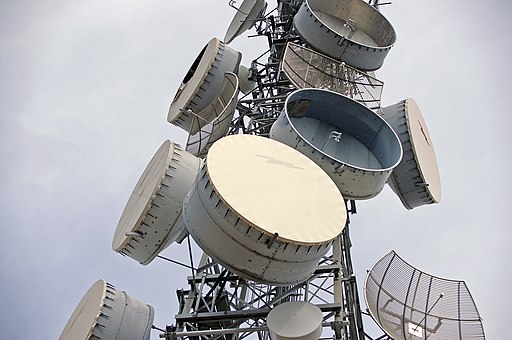![Dr Michael de Percy [Photo by ABC News: Matt Roberts] Dr Michael de Percy](https://www.abc.net.au/news/image/12563092-4x3-940x705.jpg) |
| Dr Michael de Percy, University of Canberra (Photo: ABC News, Matt Roberts). |
Recently, I spoke with Tom Maddocks from ABC News Canberra about transport policy and the impact of light rail, buses, and road usage in the ACT. Although light rail is yet to make an impact on car usage, I am of the view that any infrastructure is better than no infrastructure, and a mix of transport modes, supported by appropriate pricing and charging mechanisms, is key to transport policy success.
Although I live in Gunning these days, I have had personal experience of public transport in Canberra over the last 20 years. It is great if you live near one of the major routes, but there are many pockets of under-served areas where a trip in one's car can take 10-15 minutes, whereas a bus, assuming the route is served regularly, can take up to one hour to travel as little as 10km.
One of the major problems I see with Canberra's light rail is the decision to recover costs through fares. This meant that light rail replaced what was already a well-served bus route into the city, with buses running every 15 minutes and taking about the same time as the current light rail network. Rather than redeploying the buses to under-served areas, however, the bus routes and timetables were amended, resulting, in many cases, in even longer trips than beforehand.
When writing about my "Canberra transport nightmare" in 2014 after attempting to get to the ANU campus from Palmerston (near Gungahlin), I had hoped that the redeployment of buses would bring more services to Palmerston. Instead, the redesigned bus timetable made my trips to the University of Canberra even longer.
When I first moved to Palmerston, I could catch the bus and arrive at the UC Bruce Campus within 30 minutes. Although there was a period of over one hour where no services ran, I could plan my day around it. Years later, the route was changed to bring the buses into Gungahlin, so each trip I went from Palmerston to Gungahlin then back past Palmerston to get to UC, and then up to a 1km walk to reach my office. It was far from ideal and it was easier to drive my car.
Judging from the many responses to the recent ABC article, the introduction of light rail has not improved things, and in many cases, has made things worse.
Part of the problem is that, much like government-led telecommunications, each mode is treated separately and by different parts of the bureaucracy. To be sure, the next stage of light rail from Civic to Woden will no doubt encourage more people to leave their cars at home, but the policy approach seems focused on light rail as the panacea, rather than just one part of an overall system.
Road user charging and pricing, parking fees, congestion charging, and improved rules and infrastructure for "active travel" and other incentives to change our behaviours in relation to car use is essential to ensure the sustainability benefits of public transport can be realised. But to introduce such policies is fraught with short-term political risk.
Even the introduction of light rail, decades in the making in the ACT, saw the ACT Liberals attacking a project that had the backing of the Liberal-led federal government through Joe Hockey's under-rated "asset recycling" policy. Imagine the political scare campaign that could be mounted against increased parking fees or congestion charging in the CBD?
Infrastructure policy is a major problem for countries like Australia, Canada, and the United States, where car use has been the norm beginning in the 1920s, and increasing in Australia since the 1950s. These are long-ingrained behaviours that are difficult to change.
Compare Australia's major cities with place like Hong Kong, Shanghai, Singapore, and the difference in the quality and extent of infrastructure is astounding. Of course, politics and private property rights in China are very different to here. My point is though, that infrastructure and road user and congestion charging cna make a big difference in car-use behaviours.
In Australia, we have the worst of both worlds: governments reluctant to tackle the hard work of building infrastructure and seeing it as an investment in productivity (rather than something to be recouped through the ticket box), and a voting public unwilling to pay for road use and increased parking costs.
Which brings me to the need for leadership in building infrastructure, or, better yet, the establishment of an independent body that is one level removed from day-to-day politics - something like the Reserve Bank Board - to enable investment in infrastructure that is not at the whim of short-term political moods.
In the meantime, the most efficient method of dealing with traffic congestion and commuting times is for for people who use public transport to put up with long commuting times, and for drivers to sit in patiently in traffic. Neither choice is ideal, but try to convince people they should pay for road use or that governments should fund transport infrastructure through debt and public-private partnerships and see how that goes down.
 Donate
Donate







 The Political Flâneur: A Different Point of View
The Political Flâneur: A Different Point of View